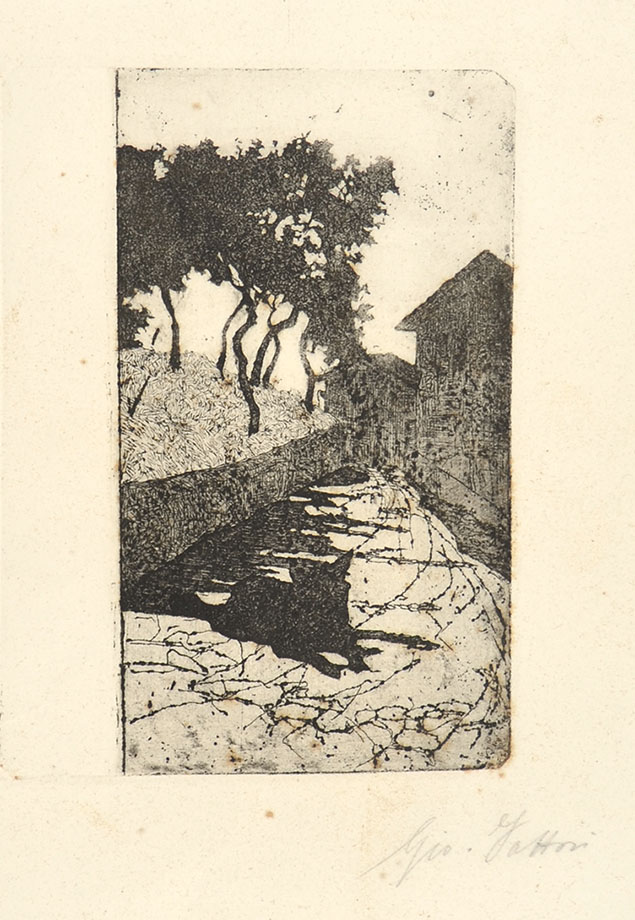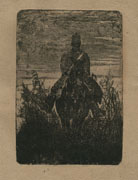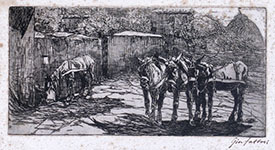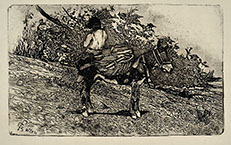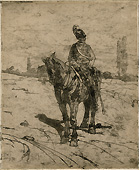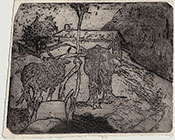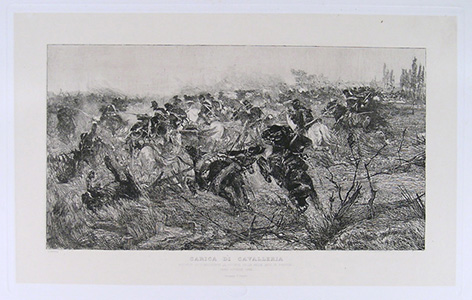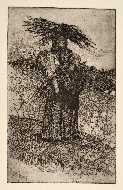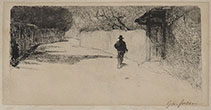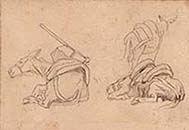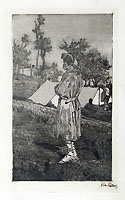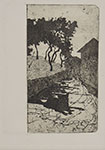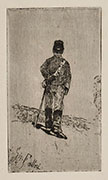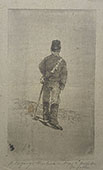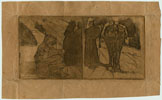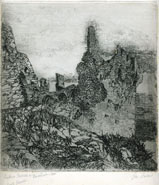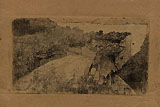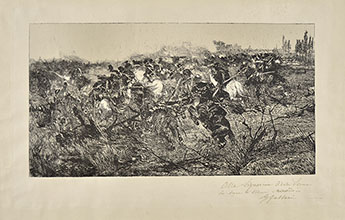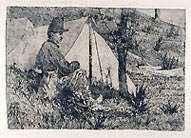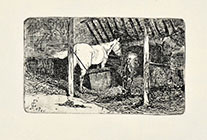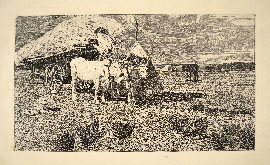(Livorno 1825 - Florence 1908)
IL CANINO NERO the little black dog
Zinc etching. Of the greatest rarity. This is the third known impression, the only signed in pencil, of the first state, before the reduction of the plate. Another impression is preserved in the Rosselli Collection, at the GDS Uffizi. Another one, originally from the Majno Collection, can be seen here on my website.
Printed in black ink, on wove paper of medium thickness, absorbent, ivory white. Signed in pencil Gio. Fattori bottom right. Wide margins, in very good condition condition. To the plate mark 175 x 126 mm, to the image 175 x 95, the full sheet 430 x 335 mm.
REFERENCES: Maria Cristina Bonagura, Le acqueforti di Fattori della collezione Rosselli, exhibition catalogue, Florence 1976, N.40
A. Baboni – A. Malesci, Giovanni Fattori, L’Opera Incisa, Milano 1983, Tav. L
Giovanni Fattori, possibly the most important painter of the nineteenth century in Italy, received his first instruction in drawing from a lesser painter of his native town. In 1846 Fattori moved to Florence to attend the Academy. During the 1850s Fattori joined the innovative artists, called Macchiaioli, who met at the Caffè Michelangelo in Florence and were champions of a new technique and style to contrast the conventional academic language. During those years, he still produced works that could be attributed to the historical-romantic school but his interest in studying from life also extended to landscape painting and the military life of the day became the subject of his first experiments in painting using the macchia technique. In 1867, after the death of his first wife, Fattori frequently stayed in the Maremma region which became the ideal backdrop for his works. Fattori began etching in the early 1880s, when he was nearly sixty; quite soon he was able to appreciate the difference of expression he could achieve using this new medium. A real peintre-graveur, he continued with etching his artistic research on light and essential shapes in reality.
